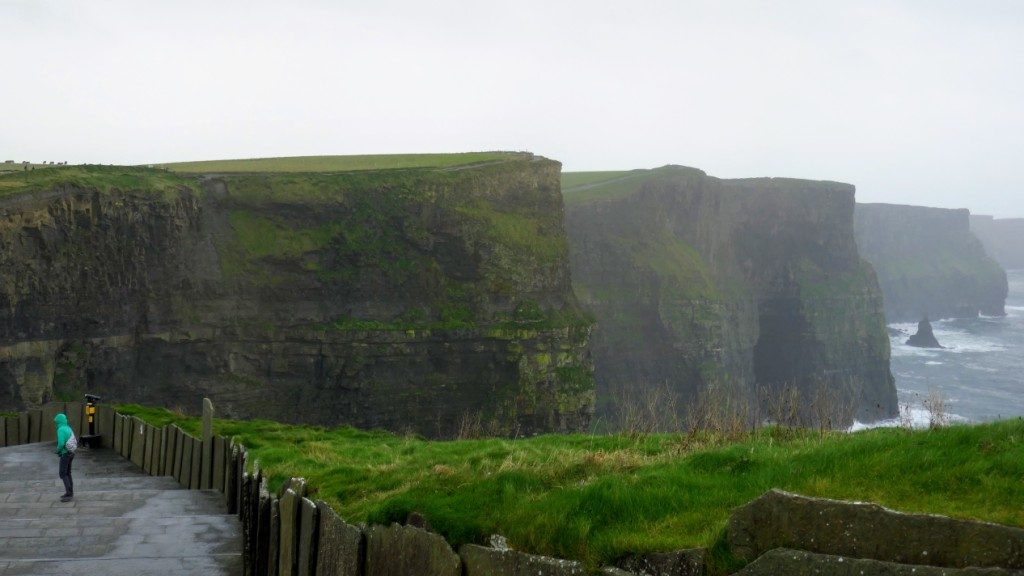There are four things about the Cliffs of Moher Visitor Centre and Cliffs Exhibition that made an early-morning visit especially interesting for me.
1) The Geology
Look at those layers. That’s 300 million years of bands of sediment upon sediment, of sandstones, siltstone, mudstone, and shale. Stunning.
Consider the fossils. I love how the visitor walkways up the hill are paved with flagstones showing the squiggly trails of small marine creatures, plus fossilized wave ripple marks from the ancient sea floor.
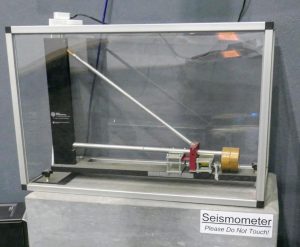 A very neat surprise is that inside the exhibition dome, presented without too much fanfare, is a working seismometer, installed in 2012 (which Jonathan deBurca Butler describes in the Irish Examiner as looking “like a mixture of very a small spinning machine and an elaborate clothes hanger.”) Here’s what we learn from the descriptive panel nearby, entitled “Moving Earth.”
A very neat surprise is that inside the exhibition dome, presented without too much fanfare, is a working seismometer, installed in 2012 (which Jonathan deBurca Butler describes in the Irish Examiner as looking “like a mixture of very a small spinning machine and an elaborate clothes hanger.”) Here’s what we learn from the descriptive panel nearby, entitled “Moving Earth.”
Records of seismic waves allow seismologists to map the interior of the Earth, and locate and measure the size of these different sources.
You can see our seismometer below in the glass case. The brass weights act as the mass.
Historically this motion was recorded by pens moving against a rotating drum.
Nowadays the seismic signal is digitised with data being recorded and analysed by computer. This enables seismologists to use the internet to exchange data in realtime and create vast ‘virtual networks’ of seismic stations that span the globe and be automatically analysed to provide near instantaneous warnings after large events.
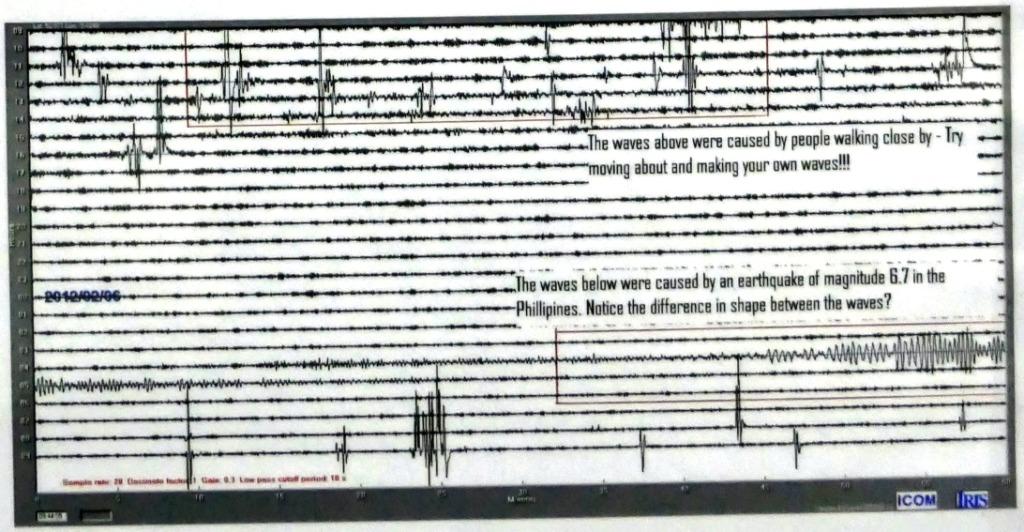
2) The Architecture of the Visitor Centre
The new visitor centre, opened in 2007, is a tour de force. Hidden away in the hill to avoid spoiling the view, it’s a beautiful space. The descriptive panels say:
In June 2005 many years of project development by Clare County Council results in the start of construction of a new visitor centre and cliff side infrastructure at the Cliffs of Moher. The updated design of the sunken building takes 20 months to build and on the 8th February 2007 the new Cliffs of Moher Visitor Experience is officially opened by Taoiseach Bertie Ahern TD. A new visitor management and education plan accompanies the new facilities.
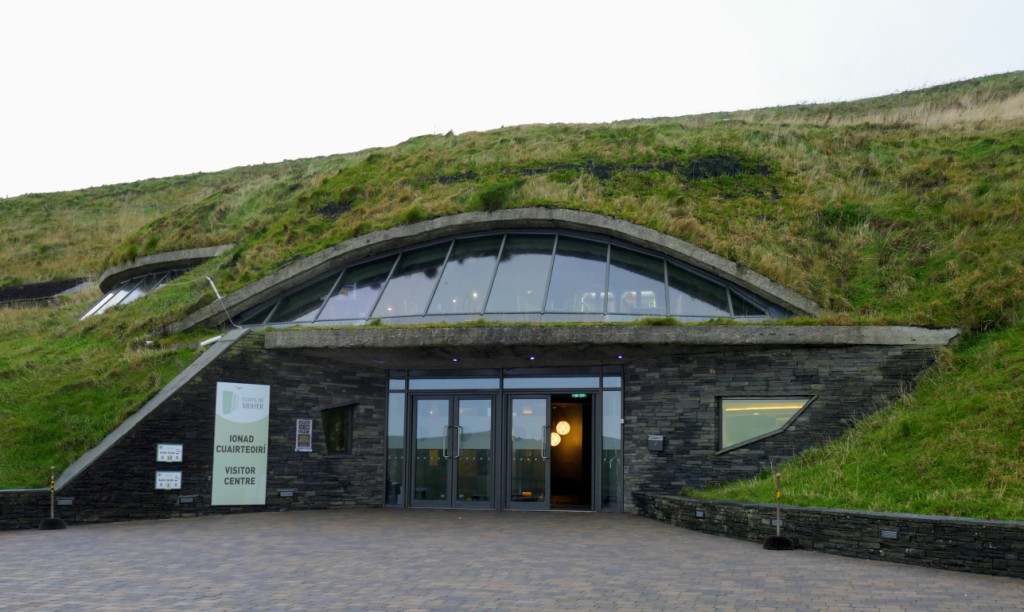
2) The Spanish Armada Connection
First alerted to the 1588 shipwrecks of the Spanish Armada in Ireland at the Clare County Museum, I was delighted to see this panel in the Cliffs Exhibition referring to the Armada ships having been spotted by a lookout atop the Cliffs of Moher.
I’ve been trying to figure out why this Spanish Armada connection is so intriguing to me. Perhaps it’s because this is English – or specifically London-y – history (remember Queen Elizabeth’s rousing speech to the troops at Tilbury), my obsession strong interest, brought to life in a place I hadn’t expected it
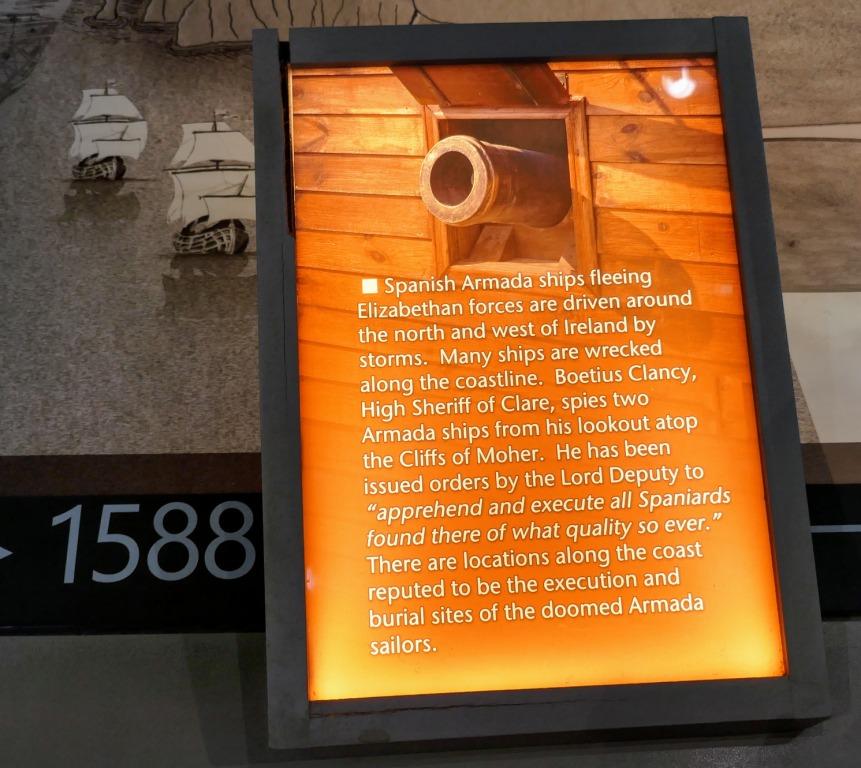
4) The Danger and Human Nature
The Cliffs remain kinda terrifying. The Cliffs Experience and staff do all they can to warn people not to stray off the official path. And yet, people do. See Thousands Risk Their Lives Every Year Along Cliffs of Moher Trail in the Irish Times. The closeness to death is similar to that at Niagara Falls. A pull, maybe due to something in human nature to push our limits … dunno. Anyway, terrifying.

Cliffs of Moher Visitor Centre and Cliffs Exhibition is museum no. 74 in my #100museums challenge (see 100 Museums Challenge).

